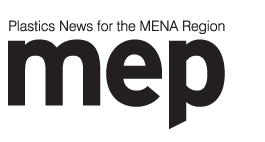ArabPlast 2015 is the pole star of the Middle Eastern plastics calendar and this dazzling showcase of innovation is coming to Dubai, the heart of the global petrochemical world, again in January 2015.
Dubai
Media partner Middle Eastern Plastics magazine is proud to be among the organisations present at this year's outing, particularly as after a faltering few years, the plastics industry in the MENA region is enjoying something of an uptick.
According to , investment in the plastics and petrochemical sector is rallying in spite of continuing difficulties in the US and Europe, and the slowdown in China. The Gulf petrochemicals industry is the largest exporter and producer in the world, offloading the majority of its output to more than 150 countries worldwide. Indeed, the state of Oman, the UAE and Saudi Arabia account for 11 per cent of the $600 billion (£372.7 billion) global petrochemical industry.
Over the coming five years, the Gulf's market share of the worldwide petrochemicals industry will leap to more than 17 per cent, it is claimed, with the GCC plastics industry growing along with it.
The materials the GCC region is poised to become a top global producer of are polyethylene (PE) and polypropylene (PP), with PE production capacities set to double from the 10.7 million tonnes recorded in 2009m to 21.5 million tonnes in 2015. PP, meanwhile, is anticipated to rise from 4.8 million tonnes to 9.5 million tonnes in this same timeframe. The production of these two materials combined will bring the capacity for both PP and PE to more than 31 million tonnes next year.
By 2020, GCC plastic consumption will have risen by around eight per cent. In Europe and North America, this figure hovers at around 25 per cent, while it is 37 per cent in the Asia-Pacific region. In total, the world is expected to consume some 540 million tonnes of plastic in 2020 and the Gulf region intends to play a key role in this expansion.

ArabPlast 2015
GCC plastics
With increased plastic production and consumption begs the question, 'what about the environment?', but sustainability is being taken seriously in the MENA region, as green building in the Gulf countries are contributing to the Middle East's growing plastics market.
The UAE's turbo-charged drive to build one of the most advanced infrastructures in the world has pedalled demand for plastics as well, while the automotive sector is benefiting from lightweight plastic components replacing heavier, traditional metal components, making cars lighter and therefore more efficient. Additionally, hospitals are switching from glass to plastic syringes and other tools and instruments.
At time of writing, ArabPlast 2015 is expecting 794 exhibitors across the entire supply chain and from the whole gamut of industries representing 41 nations across a floorplan stretching to 40,000 m sq. Moreover, some 25,650 visitors will be pounding the show floor as they take in the sights, sounds and spectacles of the event.
Is your company exhibiting at ArabPlast 2015? Get in touch with MEP Editor before November 3rd for your news to feature in MEP Magazine's on-site issue. Email .
